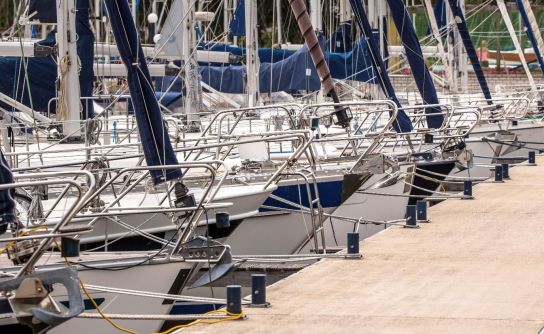15 May 2024
The UK’s newly proposed Carbon Border Adjustment Mechanism will affect the marine industry with carbon taxes imposed on imports of Glass, Aluminium and Steel from certain overseas countries.
The UK Government has opened a consultation on the introduction of a UK carbon border adjustment mechanism (CBAM) which is proposed to start in January 2027. The consultation focuses on the design and administration of the proposed CBAM, and comments can be submitted up until the 13 June 2024.
Following the UK’s departure from the EU, we have established an Emissions Trading Scheme to replace our participation in the EU Emissions Trading System. The UK and the EU ETS both subject domestic production of certain goods to carbon pricing; this means that there is a risk of the environmental benefits being undermined by carbon leakage (i.e. by companies relocating to a country with lower emissions rules or taxation to avoid this higher carbon pricing and more stringent climate regulation, whereby emissions are “displaced rather than reduced”).
To address carbon leakage concerns, the EU became the first jurisdiction to extend its domestic carbon price to certain imported emissions through the introduction of a CBAM. Reporting obligations under the EU CBAM came into force on 1 October 2023, and from 1 January 2026, EU importers will be required to pay tariffs on greenhouse gas emissions embedded in certain imported products.
From 2027, the UK will introduce its own CBAM. But there are some noteworthy differences between the UK proposals and the EU CBAM:
-
Transition and commencement: The EU CBAM has a “reporting only” transition phase from 1 October 2023 to 1 January 2026. The UK CBAM period: does not contain any transition period; all obligations would commence on 1 January 2027.
-
Sectoral scope: Unlike the EU CBAM, the UK CBAM would include ceramics and glass, but not electricity.
-
Payment mechanics: The EU CBAM operates on a similar basis to the EU ETS (with importers required to surrender EU CBAM certificates), while the UK CBAM would operate as a levy similar to other import taxes.
-
Pricing: While the price of EU CBAM certificates will derive directly from the EU ETS allowance price at the time the certificate is surrendered, the UK CBAM rate would be set quarterly by the UK government (albeit by reference to previous UK ETS prices). The levy under UK CBAM would also be set on a sector-by-sector basis, rather than the EU CBAM model of a floating market price applicable to all covered sectors.
CBAM will apply a carbon price to imported goods from the following sectors: aluminium, cement, ceramics, fertiliser, glass, hydrogen, iron, and steel; and will apply to Scope 1, Scope 2, and select precursor product emissions embodied in imported products. If you import CBAM-applicable products you will need to start considering how to gather emissions data requirements.
Complete the online consultation to have your concerns heard. Visit Consultation on the introduction of a UK carbon border adjustment mechanism - GOV.UK

